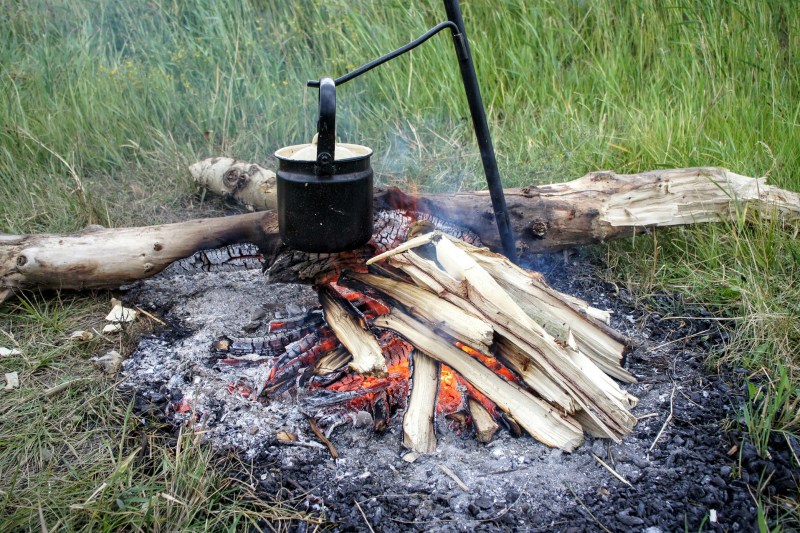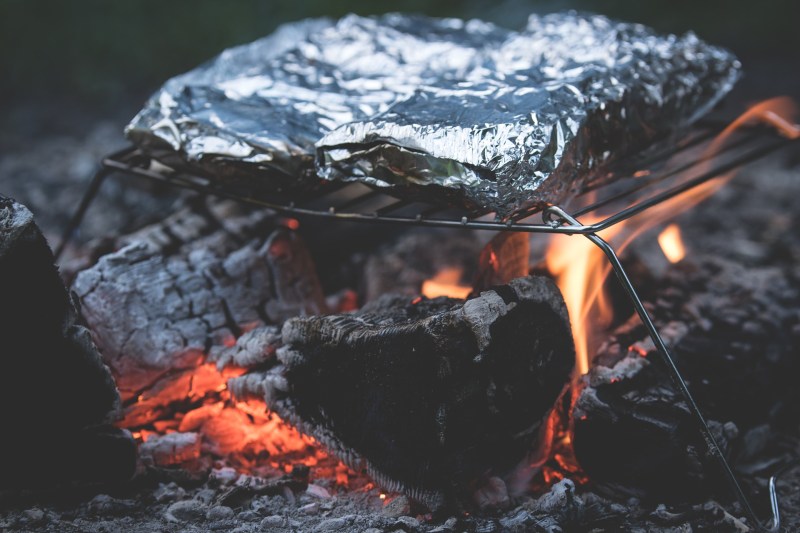There’s something about being outdoors and cooking over a campfire that makes food taste so much better. While even hot dogs and s’mores are at their peak when roasted and toasted over an open flame, other foods can easily make an incredible meal if you have the right tools and techniques.
To properly prepare food over a campfire, you need to start by building a great fire well in advance of when you want to eat. Make sure that you build the fire in a safe place and don’t let it get too high or out of control.
Generally, it could take about an hour to get the fire going so that the coals have burned down to a piping hot heat source to cook over. But once you’ve built a great fire, you can really get down to cooking a fantastic meal.
Create cooking zones

One of the biggest mistakes people make when it comes to cooking over a campfire is thinking that hot dog-roasting techniques transfer to all other foods. Things like hot dogs and marshmallows are generally pre-cooked or safe to eat raw. By sticking them into a roaring fire, you’re simply heating them through. Other foods need to actually cook, and if you try to do that using the flames, all you will end up with is a charred exterior and a raw interior.
To properly cook over a campfire, you need to create different heat zones. At a minimum, you should have three basic zones. The first should be a hot area that isn’t directly over the flames where meat and other foods can cook through to the center. The area over the flames is great for browning and getting the color on the food you want while the last zone should be a cooler area where food can be kept warm or cool off if it is cooking too quickly on the outside.
Related Guides
Finally, the fourth zone to consider is the coals themselves. You can make aluminum foil packets and toss them right into or next to the coals. There, different foods can steam or melt depending on what you are cooking. One simple but delicious way to utilize coals so you can focus on cooking your main dish on the grate above the fire is to place potatoes around the coals. You can either bake them in foil or slice them up, add a little oil or butter to the pouch along with a sprinkle of salt and pepper for a surprisingly great yet low-effort side dish.
Pack the Right Tools

While it is easiest if you do as much prep work as you can at home, having the right tools will allow you to cook well over a campfire. Case in point, a grill grate is a must-have item for great campfire cooking. A larger grate gives you plenty of space to create your cooking zones Not to mention, you’ll be able to cook a lot more food faster using a good size grill grate. Keep in mind, you’ll also want to pack tongs to easily move the food as well as the grate itself should the fire get too hot at any point. You could use a multi-tool to pull foil packets from the coals, but tongs make things much easier.
Two more very helpful tools to pack for cooking over the fire are a cast-iron skillet and a Dutch oven. Cast iron takes at least 20 minutes to heat through, but once the pot or skillet is hot, they cook food really evenly. That’s why they’re great if you’re planning to cook things like steaks or other substantial meals. Another great thing about lugging along cast iron cookware is its ability to brown food well. Cast iron can stand up to the heat while also being really easy to clean when the meal is over.
Other Tips To Remember

Just because you are cooking outside does not mean that basic food hygiene rules are lost. Keep in mind that any surface that has been used to prepare or hold raw meat or that raw eggs have come in contact with should be thoroughly cleaned. Raw meat and eggs can spread salmonella to surfaces they touch, and no one wants to end up sick due to an oversight of keeping surfaces clean. Similarly, you’ll want to pack any leftovers in sealable meal containers and put them in the cooler as soon as you’re done eating.
Be sure to take some kind of oil. Olive oil is great, but it smokes at a lower temperature. A more neutral oil like canola or vegetable oil can cook at a higher temperature and keep things from sticking to the pan or pot.
Finally, don’t forget to have enough water, dirt, or sand at the ready to put the fire out when you’re done. Don’t leave hot coals or flames unattended or without extinguishing.


